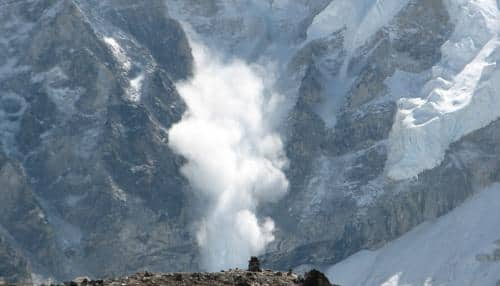- News>
- Environment
Living near mountains? This is what you should do when an avalanche hits

Understanding avalanches is important if you live near mountains or in avalanche-prone areas like Jammu and Kashmir.
New Delhi: Living in the mountains with nothing but white snow on all sides can be quite magical, peaceful and relaxing. However, being on the slopes means one has to be constantly alert to avoid getting caught in natural disasters, especially an avalanche.
Avalanches, by nature, are among the most serious objective hazards to life and property in mountainous terrain, with their destructive capability resulting from their potential to carry enormous masses of snow at high speeds.
Avalanches are most common during winter or spring but glacier movements may cause ice and snow avalanches at any time of the year.
Therefore, understanding avalanches is important if you live near mountains or in avalanche-prone areas like Jammu and Kashmir.
In what could be known as a latest in avalanche tragedy, three Indian soldiers were killed in the multiple avalanches that hit an army post at Batalik sector in Jammu and Kashmir's Ladakh region.
Preventive measures
Although humans can't control natural disasters, they can still take steps that can help reduce the risk. The International Civil Defence Organisation (ICDO) offers some preventive and protective measures such as -
- Land surveys and mapping likely avalanche zones
- Constructing building which will prevent the triggering of massive avalanches on the uphill slopes
- Establishing national institute of studies for selective monitoring of the snow and the danger of avalanches
- Setting up well trained intervention groups specialised in forecasting avalanches and rescuing persons buried by the snow and making available the necessary means of intervention.
Because avalanches can occur without warning, sending thousands of tons of debris and ice downhill at breakneck speeds, one needs to be prepared to be safe.
How to survive an avalanche
Here are some general precautions and safety measures if you or someone you're near with gets caught in an avalanche:
- Find out about the danger of avalanches in your areas by constantly evaluating the situations.
- Do not panic, but keep calm and know how to react and behave in case of an avalanche.
- If possible help neighbours and people in need – handicapped, old aged, children, homeless, etc.
- Always keep an emergency kit ready – identity papers, personal medicines, a portable radio, a hand torch with spare batteries.
- Abide by the rules and orders of the authorities and intervention teams with regard to evacuation.
- Make sure that you know how to use the rescue equipment.
- If caught in a slide, try to escape off the slab. And if you're unable to escape the avalanche, hold on to something or grab a tree.
- If swept away, start swimming to help you stay near the surface of the snow.
- If get buried, hold one hand straight above your head, pointing in the direction of the snow's surface. Perhaps, try spitting out a small amount of saliva as this may help you figure out which way is up because the fluid will run down. This may also help rescuers locate you.
- Listen to the radio for weather forecasts while avoiding the use of telephone to prevent network overload.
- After the disaster, help to identify the victims.
- Don't forget to evaluate the avalanche hazard before attempting to rescue others buried in the snow.
Aavalanches can be triggered by many things such as heavy snowfall or rain. Avalanches can also be triggered by other loads such as skiers, snowmobilers, animals or explosives. Vibrations from an earththquake can also cause avalanches.
